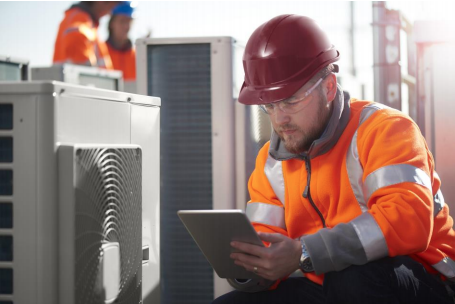What a Difference 50 Years Makes

Over the last 50 years, tremendous changes in heating and air conditioning technology and federal standards have resulted in energy efficient and better-integrated HVAC systems. An integrated mechanical system is one that combines interior climate control with fire suppression, lighting, air filtration, temperature and humidity control, as well as security detection. These systems, partnered with engineered insulation, thermally efficient windows, and caulking, and vapor barrier products have vastly improved the ability to maintain consistent indoor air in buildings, factories, homes, and office spaces.
While ductless air conditioning was first invented in the early 1970s, it wasn’t until 1978 when new developments in the heat pump revolutionized both heating and air conditioning systems. Today’s heat pumps are environmentally friendly, cost-effective, and efficient when used in forced air units (FAUs).
The coolant freon was first used in air conditioners, but as freon became linked to ozone depletion, it became necessary to search for more environmentally friendly options. In 1996, all HVAC manufacturers were required to switch from R-22 to alternatives such as R134a; however, since the early 2000s, R410a is the preferred environmental coolant.
Current HVAC systems use vapor compression technology which rely on closed looped systems to heat or chill the air. Companies and individuals are researching, developing, and testing non-vapor compression technologies such as thermoelastic cooling systems and membrane heat pumps. If these new technologies are viable, HVAC systems would no longer depend on coolants but rather, the thermoelastic systems would use metal alloys that absorb heat from the air and membrane heat pumps would utilize a vacuum to pump air through membranes.
Developments in HVAC technology have gained momentum in the last 50 years but there are endless possibilities for continued improvements. Technology and the use of solar power will continue to revolutionize the future of heating and cooling and HVAC integrated systems.
